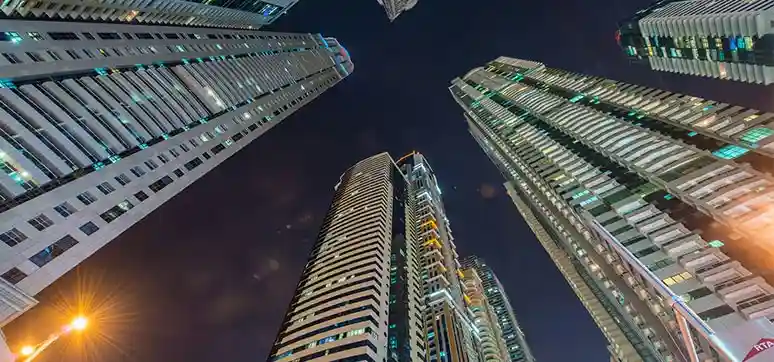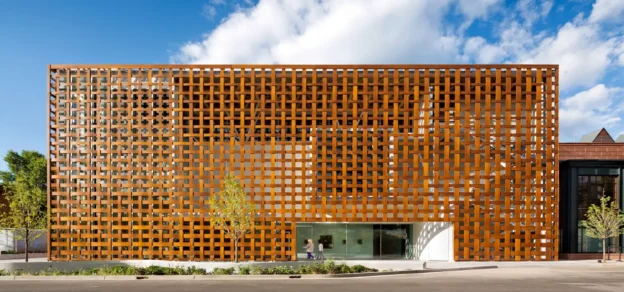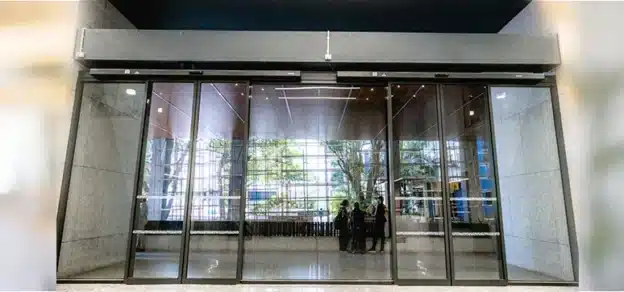The façade of the building has always remained the most significant from the point of view of both the designers as well as the developers. The façades of the buildings have multiple roles to play and perform several functions. It is the interface between interior space and exterior environment and plays a crucial role in heat and light exchange, thermal and acoustic performance thus providing occupant comfort.
The façade of the building has to keep and maintain the balance between all the parameters that include: aesthetics, thermal comfort, managing daylight and solar heat gain, visibility, etc. With the advent of new technologies and the increasing need for occupant comfort, innovations in façade materials keep on happening. What can be expected from the future façades? What should be the characteristics of the façades in the future? Which material can become the preferred choice to create the façades in the future? To answer all these and other important questions, we interviewed the subject-matter experts. Their views and opinions are presented in this story.

Important Tools for Creating Future Façades
In my opinion, the most important “tool” is to follow the basic principles of façade design with a focus on the performance requirements for each project. The role of the façade is to be fully functional and performing during the entire design life of the building. This should be delivered in the most economical manner, says Michelle Bacellar, Technical director, Meinhardt façade technology.
There is no point in using new materials and technologies if the basic principles are not well understood. Often we see “latest technology” systems installed with gaps on the vapor barriers, thermal bridges, sealed drainage points, to name a few. I guess the point that i am trying to make is that even the best systems will fail if the basic principles are missed, she adds.
Wael Jomaa, Façade Structural Manager, Salumco believes that the important tool to create future façades is the modular solution, where the façade will be considered as a puzzled envelope for the building later on.
Future Opportunities for Smart Façades, Adaptive Façades & Integrated Façades

According to Michelle, any type of dynamic façade can be beneficial in “future-proofing” façades. The idea of a dynamic façade is that the building envelope can change its performance as the exterior environment changes. This concept could be applied to cover, for example, any climate changes resulting from global warming. “The future might be related to the integrated and adaptive façade solution; however, I can see that new solutions will be integrated with the façade engineering field”, says Wael.
Current Advancements in Façade & Cladding Technologies and Materials
There are so many new technologies being developed every day, it is hard to keep up. If we take glass as an example, there is white glass that turns clear at the press of a button, clear glass that turns black, there are even some glasses that can become tinted only at selected areas, explains Michelle. She has recently come across a new antimicrobial coating technology that claims to kill even the virus that causes COVID-19 when in contact with the surface. There are also some simple, but very smart solutions for pre-fabricated and self-adhesive membranes that can make site installation a lot more efficient and robust.

Director, Eumada
Dr. Belarmino Cordero, Director, Eumada, says that the climate emergency, the raising standards of comfort, and the growing population pose serious challenges to the building industry. A transformational increase in design and construction efficiencies is necessary to be able to successfully address these challenges and is possible if we manage to leverage available technological advancements such as Building Integrated Photovoltaics (BIVPs), 3D-printing, prefabrication, or Artificial Intelligence (AI) to name a few. Façades are no longer expected to merely limit the amount of energy consumed by a building through passive design, but also contribute to balance the energy demand through active generation.
In this area, the demand for BIPV is growing thanks to their increasing efficiencies and decreasing costs. He believes that 3D printing processes are highly automated ensuring low costs, high speed of construction, and reduced wastage. It is a relatively young technology in the construction field and has the potential for optimisation. Prefabrication provides flexibility for future reutilisation or dismantling of building components which is a pivotal aspect of circular, “cradle to cradle” models. Since they allow for factory QA/ QC processes, prefabricated components also serve as carriers and catalysts of other advanced technologies. Examples of AI developments such as speech recognition, autonomous vehicles, intelligent routing in content delivery networks, or military simulations are staggering. Perhaps the building industry is not quite as developed yet.
However, advancements in the software are helping automatise the design processes, improvements in computer power are allowing to process the large amount of data that is now available (from weather files to actual live information of buildings that is collected with sensors) and there are even some sophisticated examples of AI involving machine learning and generative design. Wael says, one of the main advancements in the façade industry is the use of lightweight structures and materials to sustain very high Office building in Abu Dhabi – Example of net-zero building with BIPV Image courtesy: Woods Bagot 27 environmental pressure and loads.
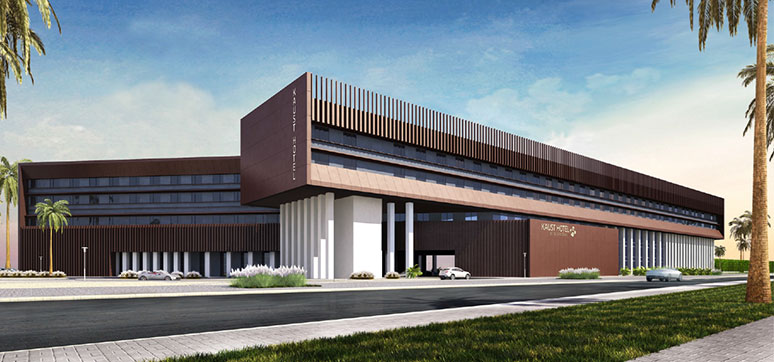
Automation in Façades and Fenestration
I suppose now more than ever, the automation of entrance doors and the like will become even more popular as they bring the advantage of contactless entry, thus assisting in preventing the spread of contagious diseases, says Michelle. Dr. Cordero notes, automation is the creation and application of technologies to produce and deliver goods and services with minimal human intervention. In façade design, CAD tools have traditionally contributed to increasing the efficiency, accuracy, and coordination, but BIM and parametric software are now taking efficiency and coordination to new levels.
Early-stage optimisation services assist to establish efficient massing configurations, considering orientation volume and positioning of the buildings in a given location and environment. This process allows to analyse how numerous configurations perform environmentally and provide the design team with the necessary performance evidence to optimise the design, he adds. Other useful parametric applications include form-finding, geometry rationalisation, or digital fabrication.
According to Wael, new techniques in architectural design based on automation, parametricity, and algorithms have invaded the design with complicated methods and applications. One of the main environmental obstacles facing any design is the allocation of fenestration, which used to be linked mainly to the design of the façade. Contemporary windows allocation in design has started to be a more complicated issue when related to complying with certain validation environmental rating systems such as LEED. Through the use of common design strategies based on the contemporary techniques in architectural design, this issue could be achieved automatically, he adds.
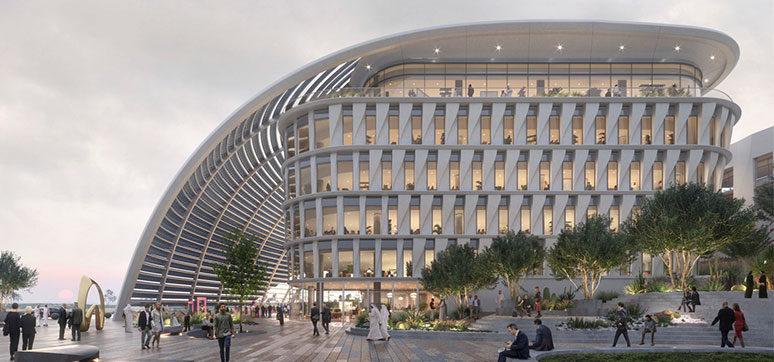
Energy Harvesting Façades – Benefits
Michelle says energy harvesting façades are those which have the capability of producing renewable energy. The façade can incorporate features that are used to harvest wind and solar energy. These elements could be integrated with solar shading features in the façade design. Renewable energy technologies are developing fast and I don’t think it will be long before they become a common feature in the building façades.
Energy harvesting façades are façades that Flexibility vs. efficiency Image adapted from World Green Building Council 28 generate energy from renewable sources. They are typically used in high-performance buildings such as Net-Zero buildings where it is not enough for the façades to be efficient but they also need to actively contribute to balance the energy consumption of the building. The most common example of energy harvesting façades is Building Integrated Photo Voltaic systems (BIVP).
The BIVP market is expanding rapidly due to the increasing demand for Net- Zero buildings coupled with the advancements in their manufacture which is becoming more efficient and cost-effective, Dr. Cordero explains. Daylighting is the exploitation of solar energy in the form of natural lighting indoors and it plays an integral role in minimising the energy footprint Ciel Tower – Example of parametric geometry rationalisation Image courtesy: Norr Architects 29 of a building. Smart daylighting enables us to design buildings that provide comfort and energy savings simultaneously, notes Wael.
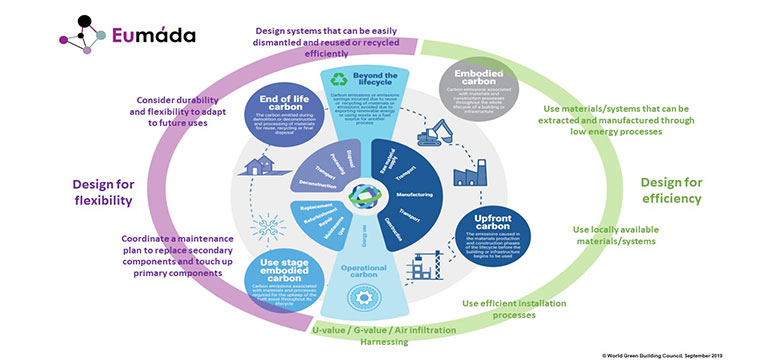
Characters of a High-Performance Façade
For Michelle, a high-performance façade is a façade that is fit for purpose and it maintains its performance characteristics during the whole design life of the building. Dr. Cordero believes that the building envelope needs to address a long list of performance parameters that include energy and sustainability, health and comfort, safety, durability, etc. It has to do so while protecting the architectural intent, ensuring that the design is feasible and can be procured on time, within the budget, and to the required quality.
Features of High-Performance Façade
- Energy efficiency
- Fenestration
- The embodied energy of materials
- Control of heat transfer, air, and moisture movement
- Properties of façade materials and components
- Steady-state heat and moisture transfer analysis for opaque building façades
- Wind and environmental pressure resistance specially for high-rise façades
– Wael Jomaa, Façade Structural Manager, Salumco
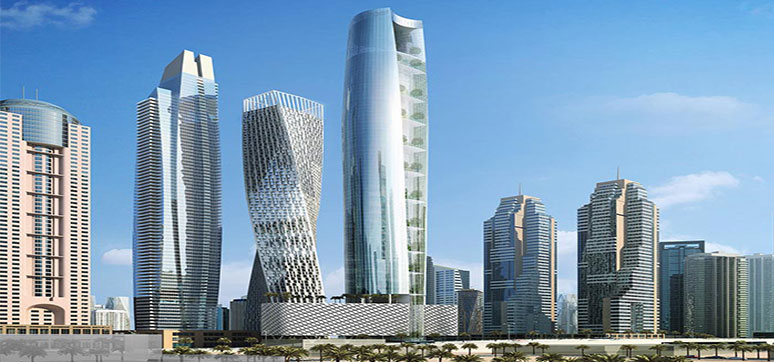
Features of Future Façade
“I would like to see more energy harvesting façades being incorporated in the façade of large buildings. It would be great to see these technologies implemented in the design, not as an element that is distinct from the façade, but rather, as a new set of systems with which façade design can be made from”, says Michelle. Wael would like to see the façade and its components as a structural element in design and structural analysis references, as till now, it is considered as a non‐structural element.
Interactive Façade – Advantages and Limitations
Michelle finds interactive façades very interesting as they provide an additional feature to the building, enabling the envelope to change its “look” as the façade changes. This could create a new building appearance every day. She believes that media façades can offer an extra advantage to the building owner, they can use the building envelope to generate revenue by selling advertisement space. Essentially, your façade becomes a billboard space that is generating revenue and additionally changes the building appearance.
According to Dr. Cordero, interactive façades are those that involve the interplay with the surrounding environment or people. When thinking of interactive façades, high-tech examples typically come to mind such as media screens, dynamic shading, switchable glazing, etc. However, low-tech features such as operable windows or manually operated blinds or shutters are also interactive façades. It is essential for comfort to design façades that enable users to maintain a certain degree of control over their environment. These simple devices allow to adjust ventilation, acoustic, temperature, or solar radiation.
The interactive façade will have to include systems that correct or moderate the performance of the glass as the outdoor conditions change, also allowing for individual occupant adjustment of the indoor comfort parameters, opines Wael. A static all‐glass envelope will not be able to give optimal performance except for a few periods during the year. Adding blinds that are irregularly controlled by occupants will not fundamentally change the performance picture. The conclusion is therefore that we need an intelligently controlled, dynamic envelope he adds.
Preferred Façade Material
Michelle finds glass an extraordinary material because it gives such a wide range of possibilities in the façade design in terms of performance and aesthetics. Dr. Cordero notes that there should not be a favourite material that suits all projects. The material selection process should be specific for every project in accordance with the varying architectural aspirations, energy targets, budget, fire requirements, etc. Where possible, the material selection should take advantage of the local resources, manufacturing capabilities, and the lessons learned from local vernacular architecture.
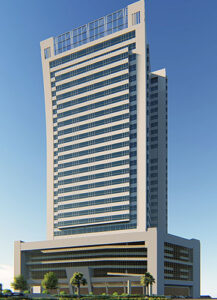
In Michelle’s opinion, a system that is suitable for the specific performance requirements of a particular project and has been executed in the most economical manner is an efficient and sustainable system. Very often systems that are called “sustainable” are overdesigned, which, in my opinion, goes against the concept of sustainability.
An efficient building not only needs to target low operational, but also low embodied energy usage as the energy involved in the extraction of raw materials, manufacturing, transport, and construction of a building will have an earlier impact on the environment than the energy consumed during its design life, says Dr. Cordero.
Moreover, for a building to be truly sustainable, it also needs to adopt circular “cradle to cradle” fundamentals and look into its future reutilisation or decommissioning. We should be designing buildings that are flexible and can be easily adapted to what the future may bring.
Wael notes that the fenestration components (windows, curtain walls, clerestories) are significant elements of façade design, from both aesthetic and performance perspectives. They allow natural light to enter interior space but also allow heat transfer between the outside and inside. Fenestration elements affect a building’s overall energy consumption, as well as its occupants’ well‐being, health, comfort, and productivity. When choosing fenestration materials, specific properties of glass should be considered, such as U‐values, SHGC, and visual transmittance. The design of the fenestration framing system is also important.
He adds sustainable features of façades are when a building has been designed to minimise the area of its external skin. For those offices with an external façade, very high levels of thermal insulation of walls and windows help to reduce heat loss. Natural ventilation and daylight penetration are maximised.
Wael’s favourite material is glass and this returns to its chemical composition where glass is made from liquid sand. It can be made by heating ordinary sand (which is mostly made of silicon dioxide) until it melts and turns into a liquid. … It is like a cross between a solid and a liquid with some of the crystalline order of a solid and some of the molecular randomness of a liquid.
Conclusion
The zero-energy building is the new trend and the demand for energy-efficient, sustainable, climate-responsive buildings are rising all around the world. Façade plays the most important role in providing all these features of the buildings. There is no doubt that the façade of the future will be highly efficient, adaptive, and more responsive.
